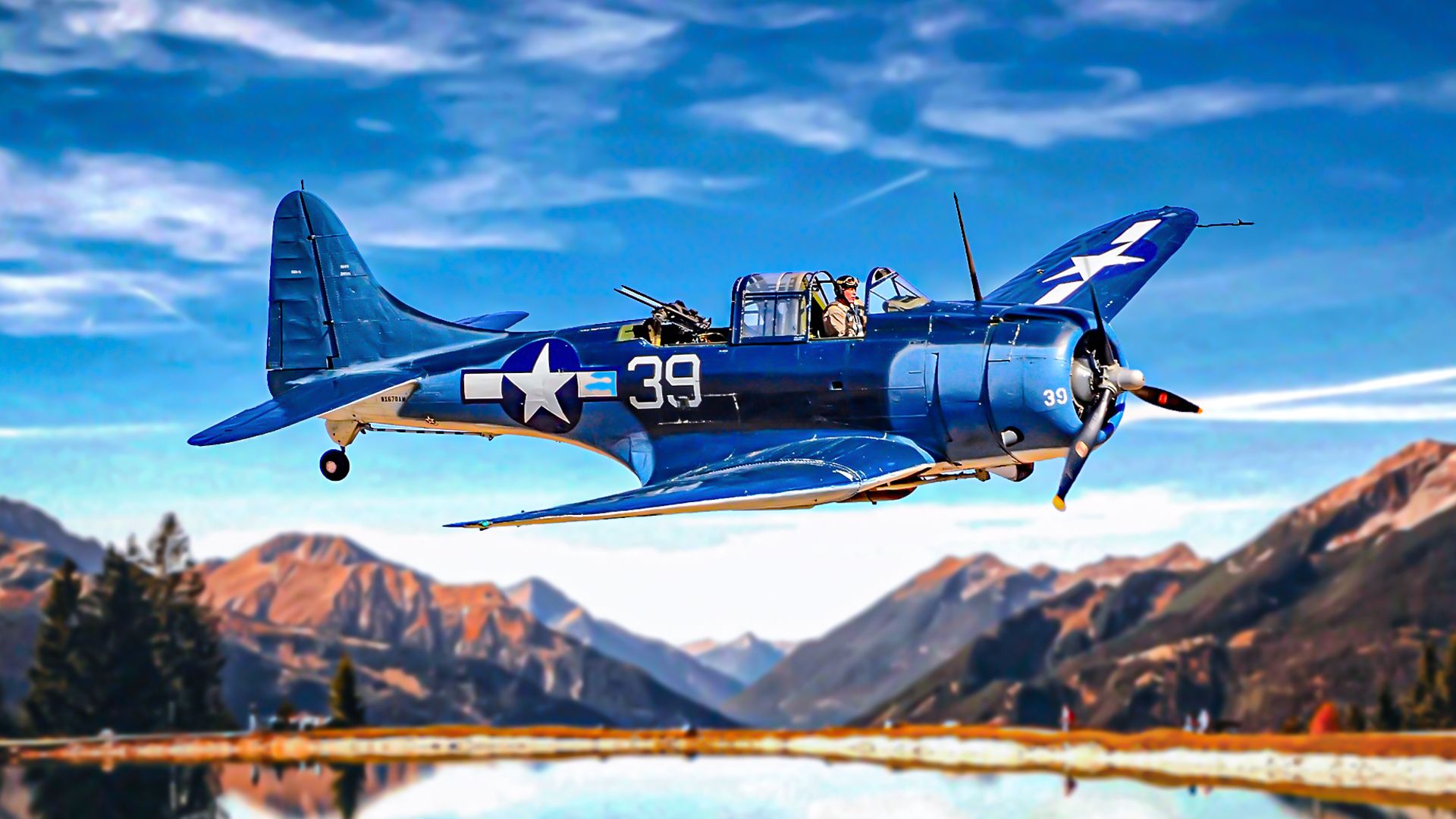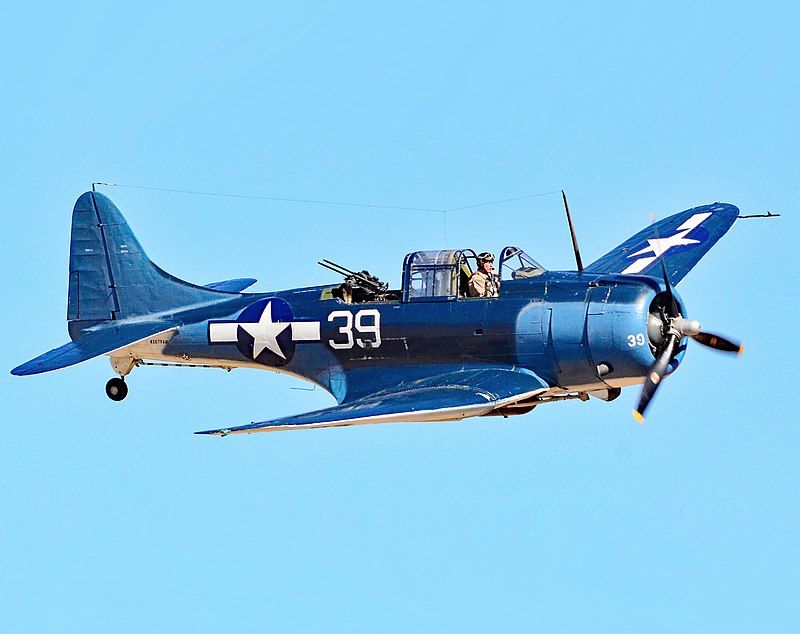Summary
- The Douglas SBD Dauntless was a game-changer in WWII, sinking more Japanese ships in the Pacific than any other Allied aircraft.
- The SBD had exceptional combat performance, with a positive air-to-air kill ratio and famous feats like sinking four Japanese carriers at Midway.
- The Dauntless ended up being replaced by the Curtiss SB2C Helldiver despite its outstanding performance, but remained in service with the USMC until the end of the war.
As I’ve said in several previous Simple Flying articles as well as my author’s bio page, my two favorite warplanes of all time are the Boeing B-52 Stratofortress strategic bomber and the Douglas SBD Dauntless dive bomber. After having penned three articles on the former, I now have the honor and pleasure of writing a standalone article on the latter proud warbird.
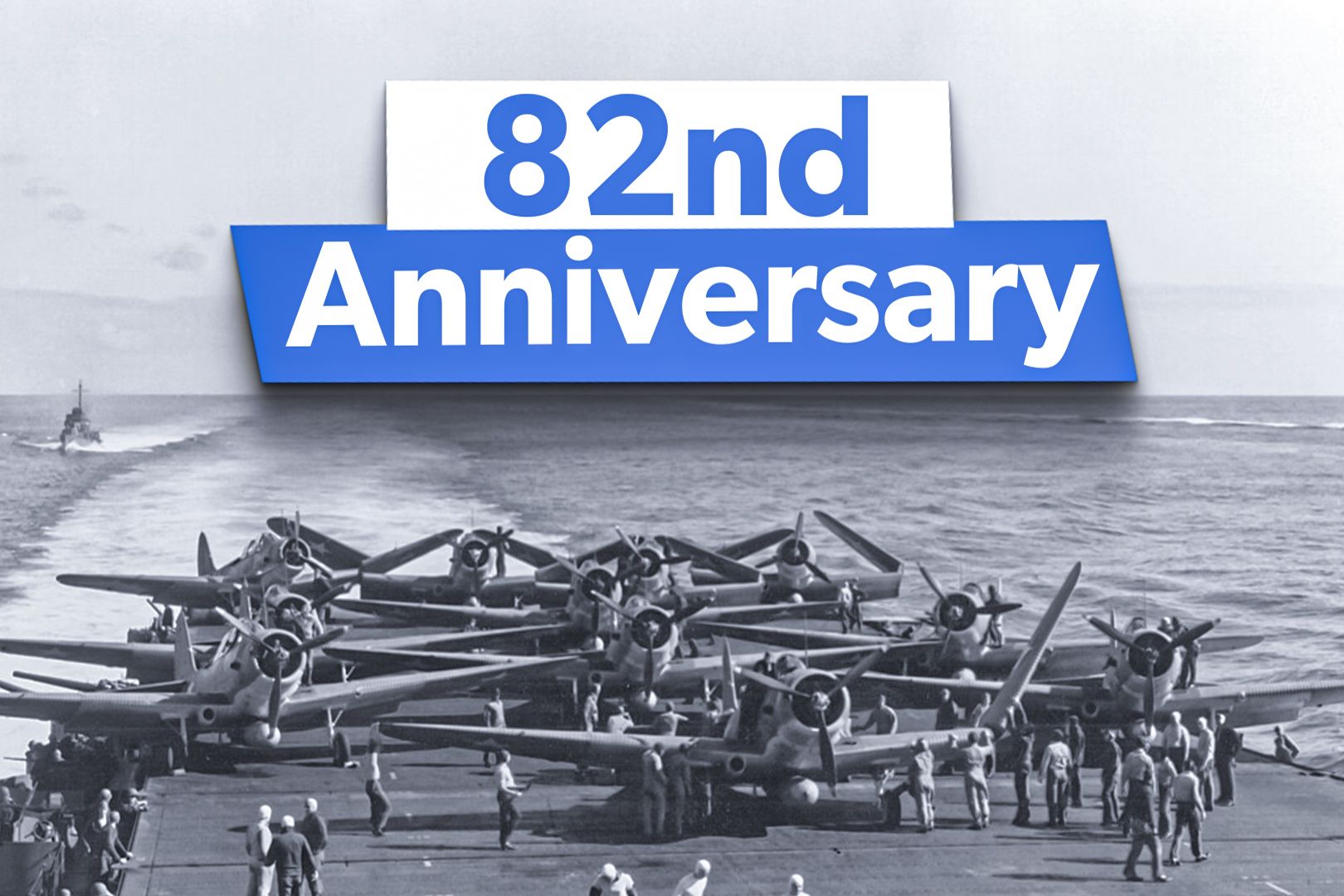
Related
82nd Anniversary: Battle of Midway & The Role Of Carrier Airpower
The Battle of Midway was one of the most decisive naval battles in history, with carrier airpower playing a crucial role.
The “Scout Bomber Douglas” AKA “Slow But Deadly” Dauntless wasn’t just the most effective dive bomber of the Second World War; unlike, say, Nazi Germany’s Junkers Ju 87 Stuka or Imperial Japan’s Aichi D3A “Val,” America’s most famous dive bomber was a true game-changer (at least in the Pacific Theater of Operations).
Early history and specifications
The Douglas SBD Dauntless made its maiden flight on May 1, 1940, and was officially accepted into operational service with the US Navy (USN) and US Marine Corps (USMC) later that year. The plane would also end up being adopted by the following countries and services:
- US Army Air Forces (USAAF), who redesignated it the A-24 Banshee
- Free French Air Forces (Forces Aériennes Françaises Libres, FAFL); some of them designated A-24 Banshees, others the SBD-5 variant
- French Naval Aviation (Aéronautique navale, or Aéronavale for short)
- Royal New Zealand Air Force (RNZAF)
- Chilean Air Force (Fuerza Aérea de Chile [FACh])
- Mexican Air Force (Fuerza Aérea Mexicana [FAM))
- Moroccan Desert Police (االمديرية العامة للأمن الوطني)
Specifications were as follows (the SBD-5 variant’s vital stats are shown here):
|
Crew: |
2 (pilot, radioman/rear gunner) |
|
Fuselage Length: |
33 ft 1.25 in (10.0902 m) |
|
Wingspan: |
41 ft 6.375 in (12.65873 m) |
|
Height: |
13 ft 7 in (4.14 m) |
|
Empty Weight: |
6,404 lb (2,905 kg) |
|
Max Takeoff Weight: |
10,700 lb (4,853 kg) |
|
Max Airspeed: |
255 mph (410 km/h, 222 kn) at 14,000 ft (4,300 m) |
|
Combat Range: |
1,115 mi (1,794 km, 969 nmi) |
|
Service Ceiling: |
25,530 ft (7,780 m) |
|
Armament: |
|
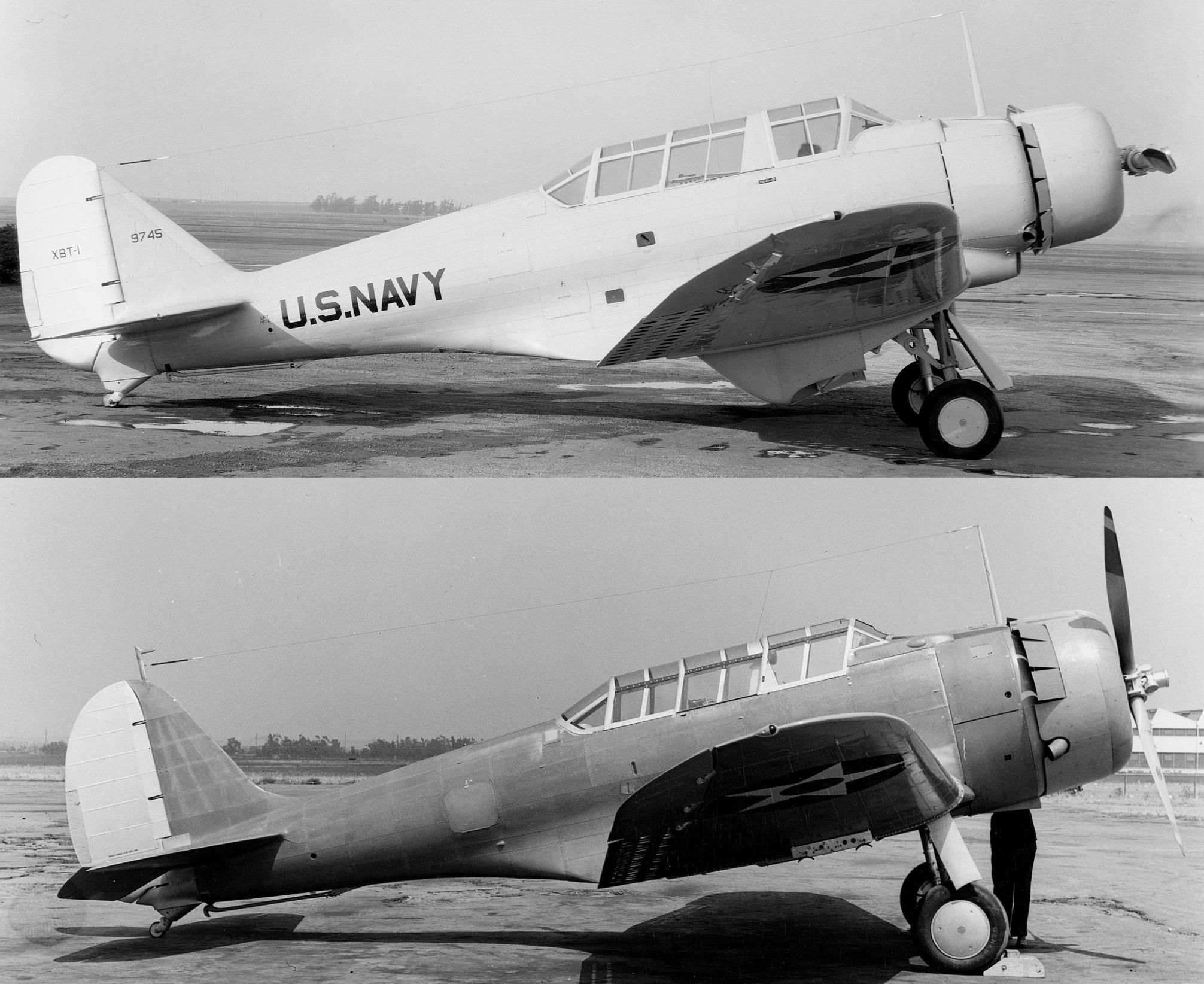
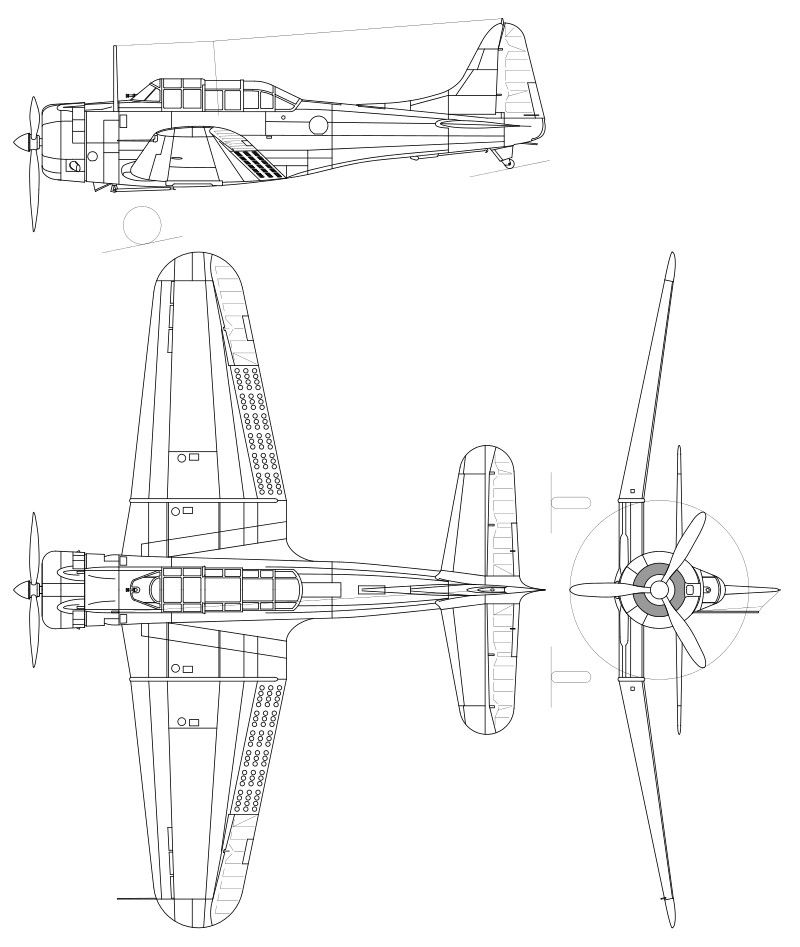
Operational history/Combat performance Part I: Pacific Theater of WWII
It was herein that the Dauntless truly earned its iconic battlefield reputation. And once America’s official participation in the war was underway, it didn’t take the “Slow But Deadly” long to earn that reputation.
On December 10, 1941, a mere three days after the attack on Pearl Harbor, the Dauntless scored its first enemy vessel kill, as SBDs from the immortal aircraft carrier USS Enterprise (CV-6) sank the Imperial Japanese submarine (IJN) I-70.
This was the start of something big: the Dauntless ended up sinking more Japanese ships in the Pacific than any other Allied aircraft, with a final tally by war’s end of six IJN carriers, one battleship, and 14 enemy cruisers sunk, along with six destroyers, 15 transports or cargo ships and scores of various lesser craft.
It was during the Battle of Midway (June 4–6, 1942), one of the epic most decisive naval battles of all time that the SBD truly attained its “game-changer” status, sinking four Japanese aircraft carriers and thus turning the tide of the war: Kaga, (加賀, named for Kaga Province), Akagi (赤城, “Red Castle”), Sōryū (蒼龍, Sōryū, “Blue [or Green] Dragon”), and Hiryū (飛龍, “Flying Dragon”). Although not as well-publicized or strategically significant, Dauntless crews also sank the heavy cruiser Mikuma (三隈; named for Mikuma River) and severely damaged the heavy cruiser Mogami (最上; named after the Mogami River).
Many excellent, well-regarded books have been written about the Battle of Midway, from “Incredible Victory” by Walter Lord (published in 1967) to “Shattered Sword” (published in 2007) by Jonathan Parshall and Anthony Tully. The one that I can personally vouch for (having read it twice) is “Miracle At Midway” by Gordon W. Prange, Donald M. Goldstein. and Katherine V. Dillon.
However, Midway wasn’t even the venue for the SBD’s first enemy carrier kill. Rather, that happened a month prior the Battle of the Coral Sea from May 4–8 1942 (not as decisive an engagement as Midway, but a strategic victory for the US nonetheless), wherein the Dauntless crews, in tandem with a fellow Douglas-made warbird, namely the TBD Devastator torpedo bomber, sank the IJN light carrier Shōhō (祥鳳, “Auspicious Phoenix” or “Happy Phoenix;” older sources ofttimes mistransliterated this ship’s name as the “Ryukaku“), which turned out to be the first Japanese carrier sun by *any* means during WWII; for good measure, they severely damaged the heavy carrier Shōkaku (翔鶴, “Soaring Crane”)
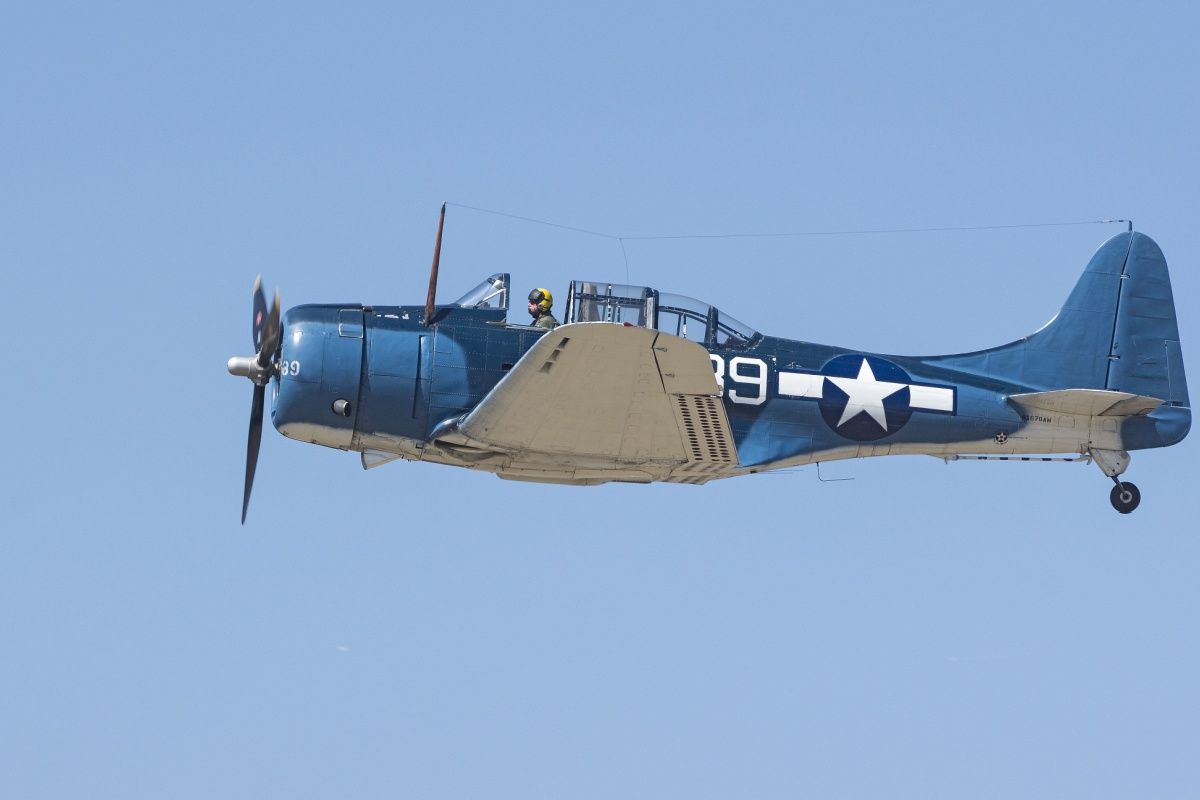
Related
History: 5 Iconic Carrier-Based Aircraft From The Second World War
While the British and Japanese boasted carrier-based aircraft that distinguished themselves early on, American aircraft dominated the later war.
Besides the IJN aircraft carriers, the SBD’s biggest kill in terms of tonnage and enemy power projection was the battleship Hiei, during the Naval Battle of Guadalcanal on November 13, 1942. This was Japan’s first battlewagon loss of the war.
It’s worth noting that the SBD earned its “Slow But Deadly” nickname in more ways than one: in addition to its effectiveness as a bomber, it also racked up a pretty decent aerial gunnery score, at the hands of its pilots (who manned the forward-firing .50 cals) and the rear gunners (who handled the swivel-mounted twin .30 cals) alike.
In fact, the Dauntless was the *only* bomber of WWII — Allied or Axis — to earn a positive air-to-air kill ratio! Officially, the SBD has been credited with 138 air-to-air victories vs. 43 losses (which equates to a 3.2:1 kill ratio), and the plane also had the lowest loss ratio of *any* U.S. Navy carrier aircraft, fighter or bomber (that’s right, folks, even lower than the Grumman F6F Hellcat and Vought F4U Corsair).
Arguably, the most famous air-to-air combat feat pulled off by a Dauntless pilot was done during the aforementioned Battle of the Coral Sea, wherein then-Lt. (j.g.) (later CAPT, USN, Ret.) Stanley Winfield “Swede” Vejtasa (27 July 1914 – 23 January 2013) pulled off a seemingly impossible with his dive bomber that, as the narrator of the following History Channel video states, “something it was never designed to do”: taking on three of the IJN’s feared Mitsubishi A6M Zero fighter planes — which had seemingly insurmountable on-paper advantages over the SBD in speed, maneuverability, and firepower alike — and defeating all three of them!
An even more successful Dauntless crew in terms of aerial kills also earned their spurs during the Battle of the Coral Sea: then-ENS (later LT) John Arthur Leppla and his gunner Radioman 3rd Class John A. Liska (or D.K. Liska depending on which source you consult), who were officially credited with a combined seven aerial victories during the battle (four for the pilot, three for the gunner).
Messrs. Vejtasa and Leppla were rewarded for their accomplishments via (1) being awarded Navy Crosses and (2) being transferred to fighter planes. Sadly, unlike “Swede,” John Leppla did not survive the war, as he was shot down and Missing In Action in October 1942, and his remains have never been found.
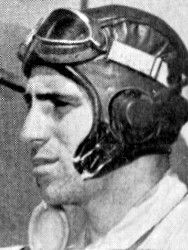
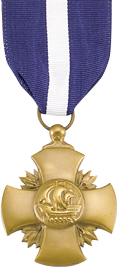
Yet in spite of the Dauntless’s outstanding performance, and the love bestowed upon it by its crews, the Navy brass still deemed it obsolescent, replacing it by 1944 with the Curtiss SB2C Helldiver, which, in spite of its on-paper technical superiority to the SBD (it was the Helldiver that ended up sinking Japan’s two most powerful battleships, Yamato and Musashi, in tandem with the Grumman TBF Avenger torpedo bombers), was absolutely despised by its crews, dubbing it the “Son of a B*tch 2nd Class. Ergo, the current month and year, June 2024, marks the 80th anniversary of the SBD’s proverbial “swan song” of the SBD in USN service, during the Battle of the Philippine Sea.
That said, the USMC, showing a bit of an independent streak in spite of falling under the Department of Navy, kept the Dauntless in service right up until the end of the war. Semper Fidelis (“Always Faithful”) indeed!
Operational history/Combat performance Part Deux: European and Mediterranean/North African Theaters of WWII
Though arguably, the Dauntless didn’t have quite the tide-turning epic performance in these Western theaters as it did in the first, it was no slouch in these Areas of Responsibility (AOR) either. Its biggest achievement was the sinking of the Vichy French battleship Jean Bart during Operation Torch in Casablanca, Morroco, on November 10, 1942; coincidentally, this was three days before the sinking of the Hiei in the Pacific, thus bringing the Dauntless’s total sunken battleship tally to two for the entirety of WWII.
In the European Theater, the SBD’s first and most significant action was Operation Leader in Norway on October 4, 1943; therein, Dauntlesses launching from carrier USS Ranger (CV-4), attacked Nazi German shipping in the vicinity of the port city of Bodø, contributing to the destruction of five enemy ships and the damaging of seven more.
Photos: Wikimedia Commons
The Yanks weren’t the only ones to use the SBD in combat in Europe. The Free French unit GC 1/18 Vendée, using the A-24Bs variant, used the bombers in support of Allied forces in southern France in 1944 after flying from North Africa to recently liberated Toulouse to support Allied and French resistance troops. Sometime thereafter, GC 1/18 participated in attacks on cities occupied by the Germans on the French Atlantic coast.
As an interesting postscript, the French Navy was the last entity to use the Dauntless in combat, doing so during the Indochina War, flying from the carrier Arromanches (formerly the Royal Navy’s HMS Colossus); in late 1947 during one operation during that war, Flotille 4F flew 200 missions and dropped 65 tons of bombs. The Aéronavale withdrew the war-weary warbirds by 1949.
Where are they now?
The last government entity to retire the Dauntless was the Mexican Air Force, doing so in 1959. Out of 5,396 SBDs built between 1940 and 1944 — spread out across a total of six variants — roughly 28 survive today in varying degrees of preservation. A few examples of those on static display at museums are:
As far as airworthy Dauntlesses are concerned, there are six such warbirds surviving today, and there’s one that’s actually available for rides to paying members of the general public: thanks to the CAF Airbase Georgia chapter for Commemorative Air Force, for a modest fee of $1,195–1,395 USD, you can take either a 20-minute or 30-minute ride respectively on the organization’s SBD-5. As I mentioned in my Battle of Midway article, that’s definitely a Bucket List item for me!
Among the upcoming venues wherein the CAF Dauntless will be available for rides is the EAA AirVenture in Oshkosh, Wisconsin from July 22-28, 2024.

